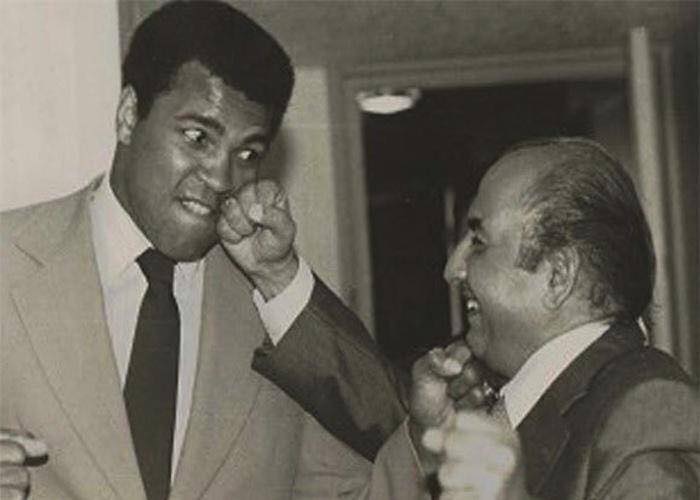A Voice That Still Echoes in Our Hearts
When we talk about the golden era of Indian music, one name that stands tall and unforgettable is Mohammed Rafi. Known for his magical voice that could express every emotion from joy to heartbreak Rafi Sahab gave Hindi cinema a soul through his singing. On his death anniversary, we pay a heartfelt tribute to Mohammed Rafi, whose melodies continue to soothe our hearts even decades after his passing. This blog explores the life journey of this legendary artist from his humble beginnings to becoming one of the greatest playback singers India has ever known.
👶 Childhood and Early Life of Mohammed Rafi
- Born: December 24, 1924
- Place: Kotla Sultan Singh, near Amritsar, Punjab
- Family Background: Traditional Muslim family; father was Haji Ali Mohammad
As a child, Rafi Sahab was drawn to music not through privilege but through raw passion. He would follow street performers, imitate the sounds of fakirs, and practice singing wherever he could. His musical spark was first noticed by Abdul Hameed, his brother’s friend, who later played a pivotal role in his career.
🎓 Musical Education and Training
Despite limited formal schooling, Rafi received classical training from Ustad Bade Ghulam Ali Khan, Ustad Abdul Wahid Khan, and Firoze Nizami. His classical grounding enabled him to:
- Sing in multiple languages (Hindi, Punjabi, Marathi, Bengali, Telugu, Kannada, even Farsi and English)
- Perform complex ragas with finesse
- Adapt across genres: from ghazals to qawwalis to bhajans to patriotic songs
His mastery made him every music director’s favorite.
🏠 Family Life: The Man Behind the Legend
Rafi Sahab married Bilquis Bano and had seven children. Despite fame, he lived modestly, away from glamour. He was deeply religious and kind-hearted—often singing without charging for newcomers or struggling composers.
Known for his humility, punctuality, and discipline, he led a life of dignity and grace that matched the sincerity of his songs.
🎶 The Rise of a Musical Icon: Rafi’s Filmy Career
🎬 First Hindi Song:
- “Aji Dil Ho Kaabu Mein” – Gaon Ki Gori (1945)
🌟 Breakthrough:
- “O Duniya Ke Rakhwale” – Baiju Bawra (1952)
- Collaborated with top music directors: Naushad, Shankar-Jaikishan, S.D. Burman, Madan Mohan, Laxmikant-Pyarelal
Rafi lent his voice to leading stars like:
- Dilip Kumar
- Dev Anand
- Raj Kapoor
- Shammi Kapoor
- Rajesh Khanna
🎵 Iconic Songs:
“Kya Hua Tera Wada” (won National Award)remain evergreen even today.
“Chaudhvin Ka Chand Ho”
“Baharon Phool Barsao”
“Aaj Mausam Bada Beimaan Hai”
“Yeh Duniya Yeh Mehfil”
“Tum Mujhe Yun Bhula Na Paoge”

🎤 A True Tribute to Mohammed Rafi’s Musical Brilliance
Paying a tribute to Mohammed Rafi means honoring a voice that embodied every shade of human emotion. He recorded 7,000+ songs, including patriotic anthems, spiritual bhajans, romantic duets, and emotional solos.
His music was not bound by language or religion he was truly a unifying voice in a diverse nation.
He could sing:
Light-hearted fun numbers
High-pitched classical songs
Soft romantic whispers
Powerful qawwalis
Devotional bhajans
🤝 Relationships with Fellow Artists
Rafi shared great respect with peers like Kishore Kumar, Mukesh, and Manna Dey. Unlike others, Rafi avoided controversies and stayed focused on his music. Despite the popular “Rafi vs Kishore” debates, both had admiration for each other’s work.
His professionalism and perfection earned him the respect of music directors and co-singers alike.
🏆 Awards and National Honors
- Padma Shri – 1967
- 6 Filmfare Awards – Best Male Playback Singer
- National Film Award – “Kya Hua Tera Wada” (1977)
- Numerous Lifetime Achievement Awards posthumously
🎖️ Trivia: In a BBC poll, Rafi was voted as “The Greatest Voice in Hindi Cinema.” of what he truly earned the love and devotion of millions of fans across generations.
A Sudden Goodbye: The Day Music Wept
On 31 July 1980, Mohammed Rafi suffered a massive heart attack and passed away at the age of 55. His death left the entire nation in mourning. His funeral procession was attended by over 10,000 people, a testimony to how deeply he was loved.
Radio stations played his songs in tribute. Newspapers ran emotional headlines. The void left by Rafi’s departure is still felt by fans, old and new. But legends never really die. This tribute to Mohammed Rafi is a reminder that his voice lives on in every corner of India, in every nostalgic soul, in every heartbroken lover who turns to music for solace.
🌈 Legacy: Rafi’s Voice Still Resonates
Even decades after his passing, Rafi’s songs are:
- Played on radio daily
- Covered by contestants on reality shows
- Available on streaming platforms
- Recreated in modern Bollywood soundtracks
Rafi Nights, tribute concerts, and fan clubs still celebrate him globally. Young artists study his singing techniques to learn how to emote with sincerity and control.
His legacy lives on in music, memories, and millions of hearts.
💬 Final Words: A Lasting Tribute to Mohammed Rafi
Rafi Sahab was more than just a playback singer he was a cultural phenomenon, a spiritual soul, and an artistic genius.
As we remember him on his death anniversary, this tribute to Mohammed Rafi is not just about mourning a loss it’s about celebrating a legacy that still breathes through every melody he left behind.

